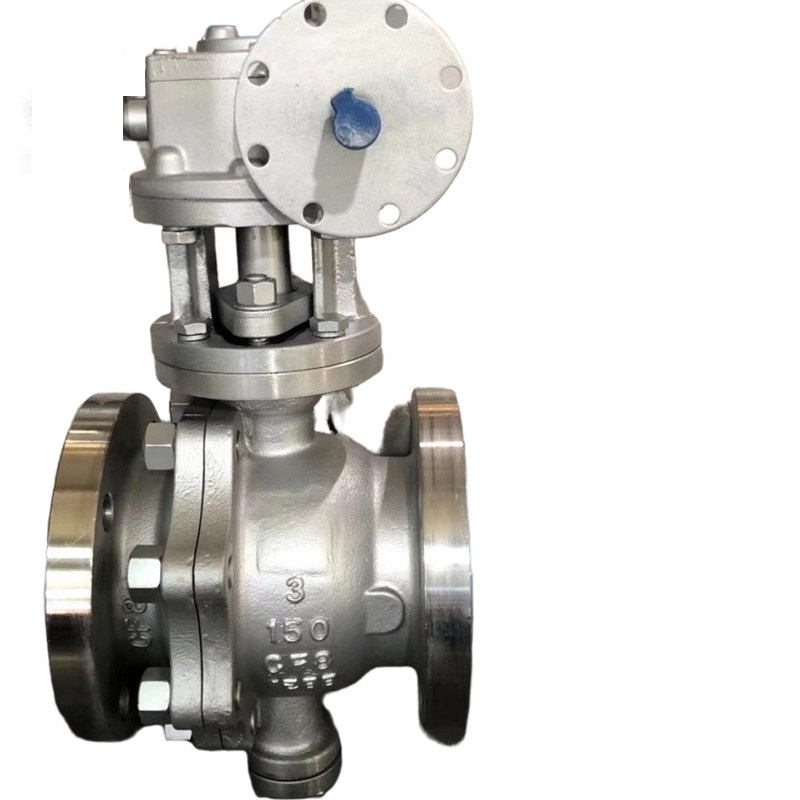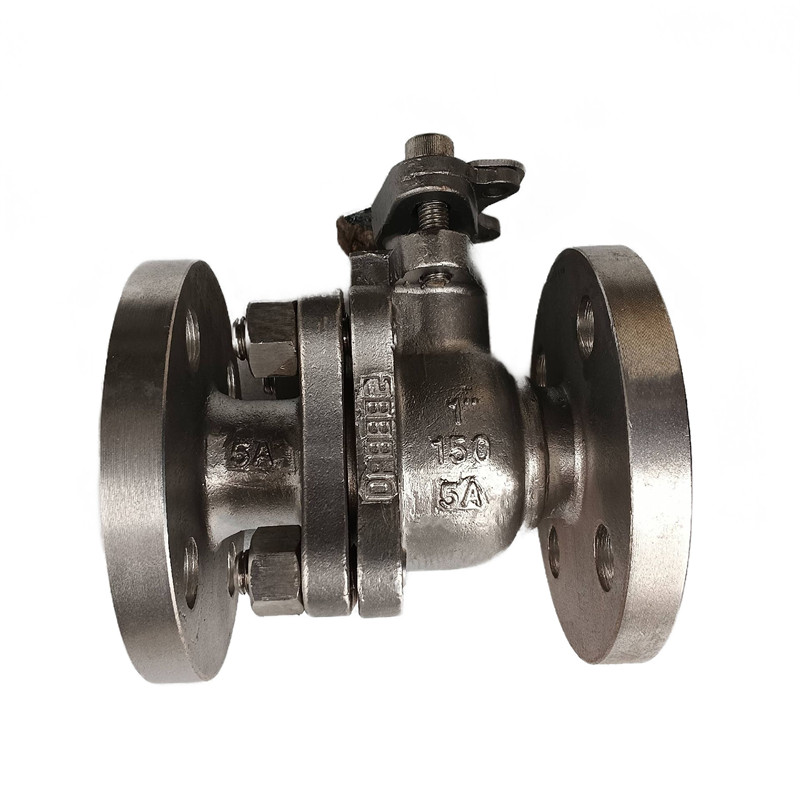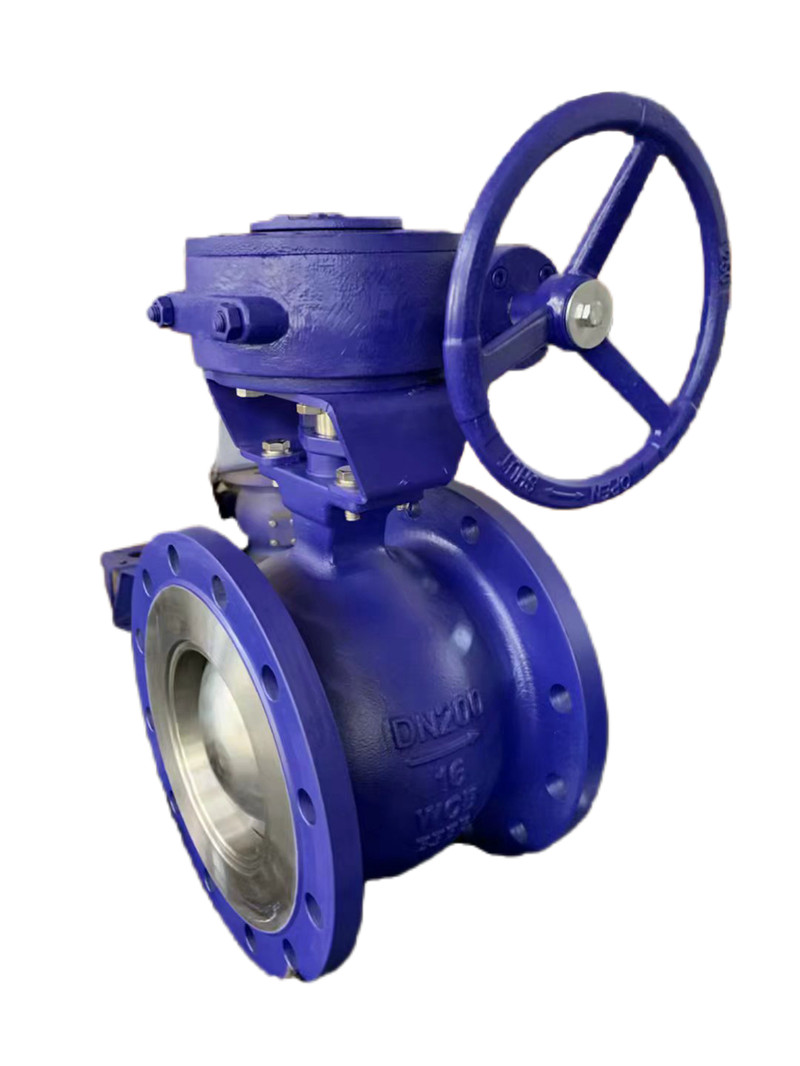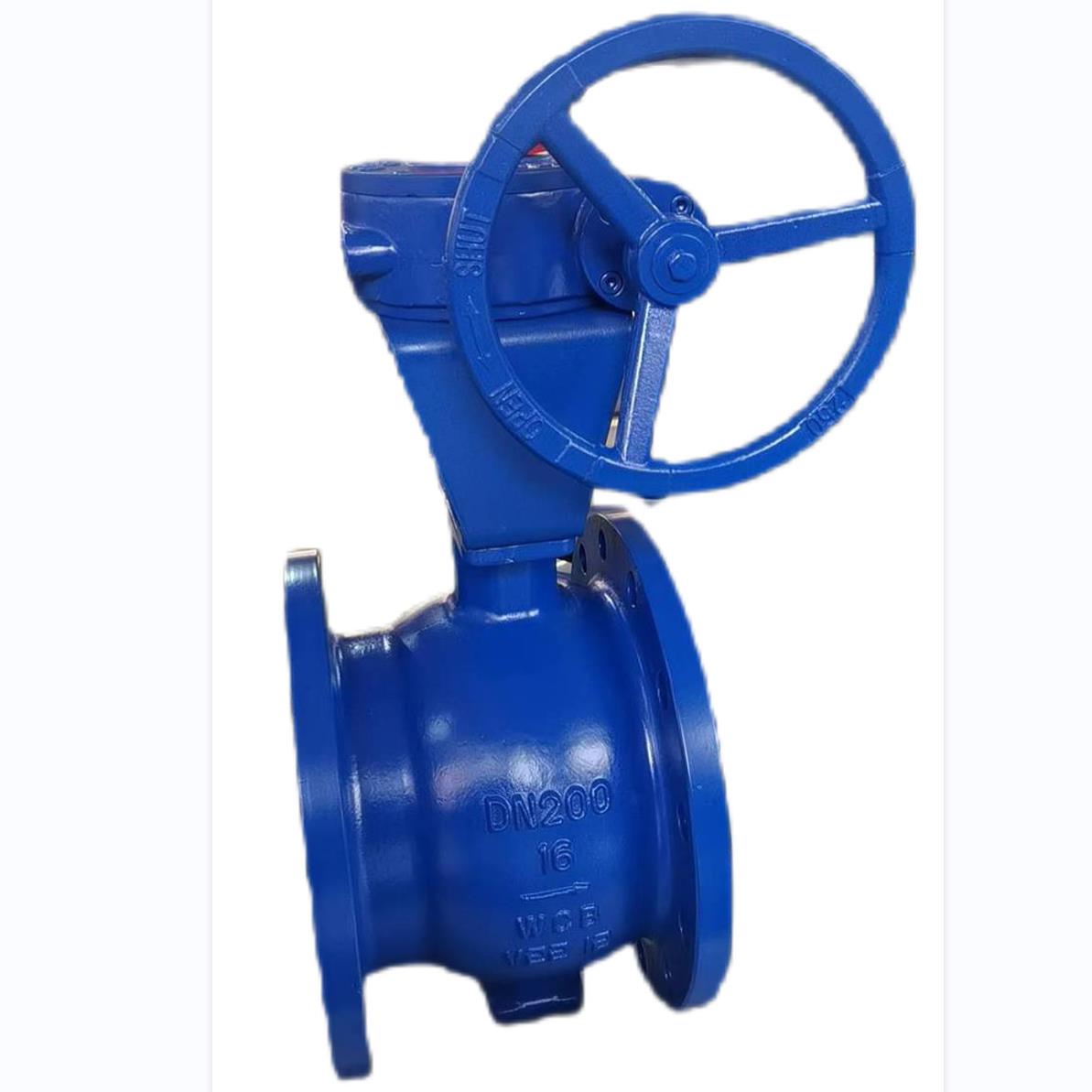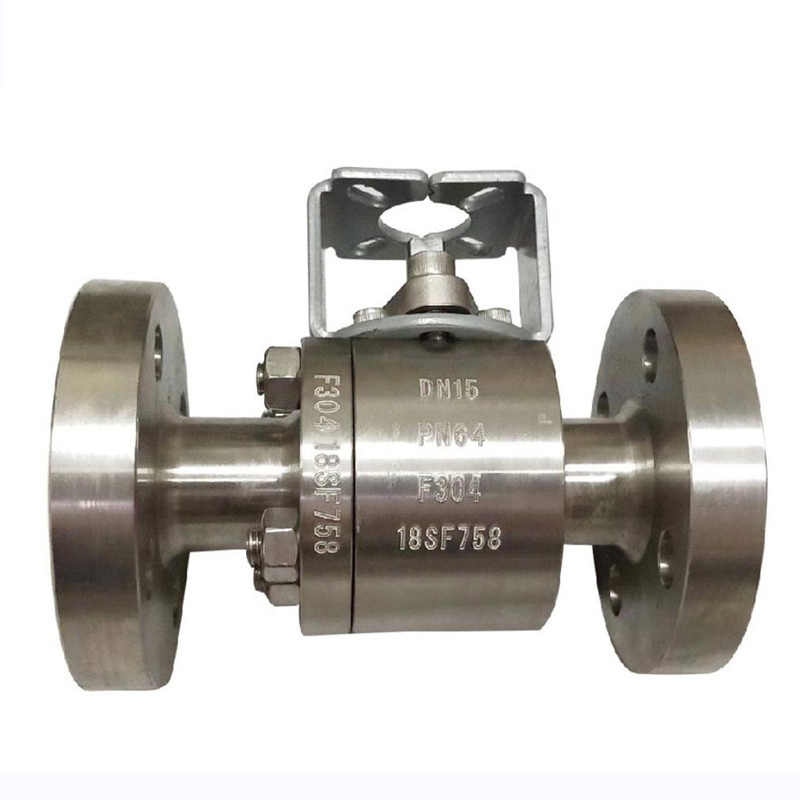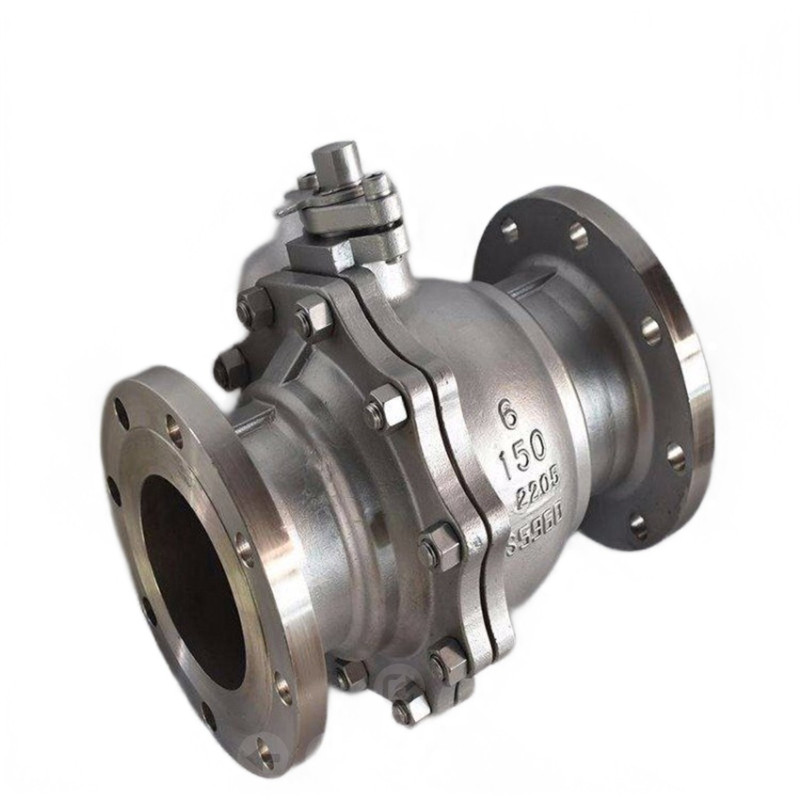Productos
Perfluoroether O-ring Ball Valve,300LB,3 Inch,CF8,RF End
Estándar de diseño: API 6D
A prueba de fuego: API 607/6FA
Clasificaciones de presión y temperatura: ASME B16.34
Rango de tamaños: 2” a 48”
Rango de presión: Clase 150 a 2500
Conexiones finales: RF con bridas, RTJ, soldadura a tope
Tipo de bola: bola sólida forjada, montada sobre muñón
Dimensiones del extremo bridado: ASME B16.5 (≤24”), ASME B16.47 Serie A o B (>24”)
Dimensiones del extremo de soldadura a tope: ASME B16.25 cara a cara
Dimensiones cara a cara: ASME B16.10
Inspección y Pruebas: API 6D
Materiales del cuerpo: WCB, CF8, CF8M CF3M, 4A,5A,6A, C95800.
Materiales del asiento: PTFE, RPTFE, DEVLON, NYLON, PEEK, metal completo con revestimiento duro.
Características del producto
.La resistencia al flujo es pequeña;
2.Asiento de pistón, diseño de estructura antiestática de protección contra incendios;
3.Sin limitación en la dirección del flujo del medio;
4.Cuando la válvula está en posición completamente abierta, las superficies del asiento están fuera del flujo de flujo que siempre está en pleno contacto con la compuerta que puede proteger las superficies del asiento y es adecuada para limpiar la tubería;
5.Se puede elegir un embalaje con resorte;
6. El embalaje de bajas emisiones se puede elegir de acuerdo con el requisito ISO 15848;
7.Se puede elegir el diseño extendido del vástago;
8.Se puede elegir el diseño del asiento de metal a metal;
9.Se puede elegir el diseño DBB,DIB-1,DIB-2;
10.La bola se fija con una placa de soporte y un eje fijo;
1. Introduction to perfluoroether O-ring ball valve
In the field of industrial fluid control, valves are key components, and their performance is directly related to the safety, reliability and efficiency of the system. With the continuous advancement of industrial technology, higher requirements are placed on the adaptability of valves under extreme working conditions. As an innovative product that combines high-performance sealing materials with advanced ball valve structures, perfluoroether O-ring ball valves are gradually becoming the best solution for fluid control in high-end fields such as chemical, petroleum, and aerospace. This article will comprehensively analyze the core advantages of perfluoroether O-ring ball valves from the aspects of structural characteristics, material properties, and application fields.
2. Structural characteristics and functional design of perfluoroether O-ring ball valves
(I) The core difference between floating balls and fixed balls
Perfluoroether O-ring ball valves can be divided into two types: floating balls and fixed balls according to the ball fixing method. The structural differences directly determine the applicable scenarios:
Floating ball valve
The ball is connected to the valve body only through the lower valve stem, and the upper valve stem only transmits torque without fixed constraints.
When working, the medium pressure pushes the ball to move to the outlet end to form a dynamic seal with the valve seat.
Advantages: simple structure, low cost, suitable for low pressure and clean media working conditions.
Limitations: under high pressure, the friction between the ball and the valve seat intensifies, which can easily lead to wear of the sealing surface and insufficient long-term stability.
Fixed ball valve
The ball is rigidly connected to the valve body through the upper and lower valve stems, and only moves around the axis when rotating.
The valve seat adopts an elastic pre-tightening structure, which automatically compensates for wear through the medium pressure to ensure long-term sealing.
Advantages: strong pressure bearing capacity, stable sealing performance, suitable for high pressure, high temperature, corrosive media working conditions.
Typical applications: oil pipelines, chemical reactors, aerospace hydraulic systems, etc.
(II) Fireproof and anti-static and valve stem anti-flying design
For high-risk working conditions, the perfluoroether O-ring ball valve adopts multiple safety designs:
Fireproof and anti-static function
The valve body and the ball adopt a metal-metal contact design, and static electricity can be released to the system grounding through a conductive path.
The sealing material is perfluoroether rubber (FFKM), whose high temperature resistance can prevent seal failure during fire and avoid secondary disasters caused by medium leakage.
Valve stem anti-flying structure
A limit step is designed at the bottom of the valve stem, and an anti-slip nut is configured at the top to ensure that the valve stem remains connected to the ball under high-pressure conditions.
The surface of the valve stem is hard chrome plated to improve wear resistance and corrosion resistance and extend service life.
(III) The core role of perfluoroether O-rings
As a key sealing component of the ball valve, the performance of perfluoroether O-rings directly determines the reliability of the valve:
Dynamic sealing compensation
In floating ball valves, the O-rings compensate the gap between the ball and the valve seat through elastic deformation to ensure sealing under low-pressure conditions.
In fixed ball valves, the O-rings serve as elastic carriers of the valve seat preload force and withstand the impact of high-pressure media without failure.
Media compatibility guarantee
The chemical inertness of perfluoroether rubber can resist the corrosion of more than 1,600 media such as strong acids, strong alkalis, and organic solvents, and avoid swelling or dissolution of sealing materials.
High temperature resistance (long-term use at 300°C, intermittent use at 327°C) ensures sealing stability under high-temperature conditions.
Anti-aging and long life
There is no C-H bond in the molecular chain structure of perfluoroether rubber, which can effectively resist environmental aging factors such as ozone and ultraviolet rays.
The low compression set rate (≤50% at 300°C) ensures that the sealing performance can be maintained after long-term use.
III. Analysis of perfluoroether rubber (FFKM) materials
(I) Chemical composition and molecular structure
Perfluoroether rubber (FFKM) is a terpolymer with polytetrafluoroethylene (PTFE) as the main chain and perfluoromethyl vinyl ether (PMVE) as the side chain. Its molecular structure characteristics include:
Fully fluorinated chain segment
The main chain and the side chain are replaced by fluorine atoms to form a dense fluorocarbon protective layer, which gives the material excellent chemical inertness.
Cross-linked network structure
The three-dimensional cross-linked network is formed by peroxide vulcanization or bisphenol vulcanization system to improve the mechanical strength and thermal stability of the material.
(II) Physical and chemical properties
High temperature resistance
Continuous use temperature: 260-290℃
Short-term temperature resistance: 316℃ (constant temperature), 343℃ (intermittent)
Low temperature performance: -19℃ (glass transition temperature)
Chemical resistance
Strong acid resistance: sulfuric acid, hydrochloric acid, nitric acid (concentration ≤98%)
Strong alkali resistance: sodium hydroxide, potassium hydroxide (concentration ≤50%)
Organic solvent resistance: ketones, esters, ethers, aromatic hydrocarbons
Oxidation resistance: can be exposed to strong oxidizing environments such as ozone and hydrogen peroxide for a long time
Propiedades mecánicas
Hardness (Shore A): 60-90
Tensile strength: 10-20 MPa
Elongation at break: 150-300%
Compression deformation rate (300℃×70h): ≤50%
(III) Corrosion resistance comparison
The corrosion resistance of perfluoroether rubber is significantly better than that of traditional fluororubber (FKM) and nitrile rubber (NBR):
Medium type Perfluoroether rubber (FFKM) Fluorine rubber (FKM) Nitrile rubber (NBR)
Concentrated sulfuric acid (98%) Grade A (no swelling) Grade C (partial swelling) Grade D (completely dissolved)
Sodium hydroxide (50%) Grade A Grade B (slight swelling) Grade D
Toluene Grade A Grade B Grade D
Hydrogen peroxide (30%) Grade A Grade C Grade D
IV. Industry application of perfluoroether O-ring ball valve
(I) Chemical and petroleum industry
Reactor and agitator seal
Under strong acid, strong alkali, and high-temperature organic solvent conditions, perfluoroether O-ring ball valves can ensure zero leakage operation of the reactor and avoid cross contamination of the medium.
Petroleum pipelines and valves
In highly corrosive oil wells containing hydrogen sulfide and carbon dioxide, fixed ball valves with perfluoroether O-rings can withstand 20 MPa pressure and extend the service life of the pipeline.
(II) Aerospace field
Aerospace engine hydraulic system
Under extreme temperature differences of -55℃ to 300℃, perfluoroether O-ring ball valves can maintain the sealing of the fuel system and prevent hydraulic oil leakage from causing fire.
Spacecraft propulsion system
In vacuum and oxidizing environments (such as liquid oxygen propellant), the low temperature and oxidation resistance of perfluoroether rubber ensure long-term reliable operation of the valve.
(III) Semiconductor manufacturing industry
High-purity media transportation
In processes such as chip etching and chemical vapor deposition (CVD), perfluoroether O-ring ball valves can prevent metal ions from precipitating and contaminating the wafer surface.
Vacuum system sealing
With the metal sealing surface, the valve can achieve an ultra-high vacuum of 1.33×10⁻⁷ Pa, meeting the stringent cleanliness requirements of semiconductor equipment.
(IV) Biomedicine and food processing
Aseptic filling equipment
The non-toxic and non-precipitation characteristics of perfluoroether O-rings meet FDA standards, ensuring the safety and compliance of drug and food production.
High temperature sterilization system
Under 121℃ steam sterilization conditions, the ball valve can withstand 500 cycles of sterilization without failure, extending the equipment maintenance cycle.

